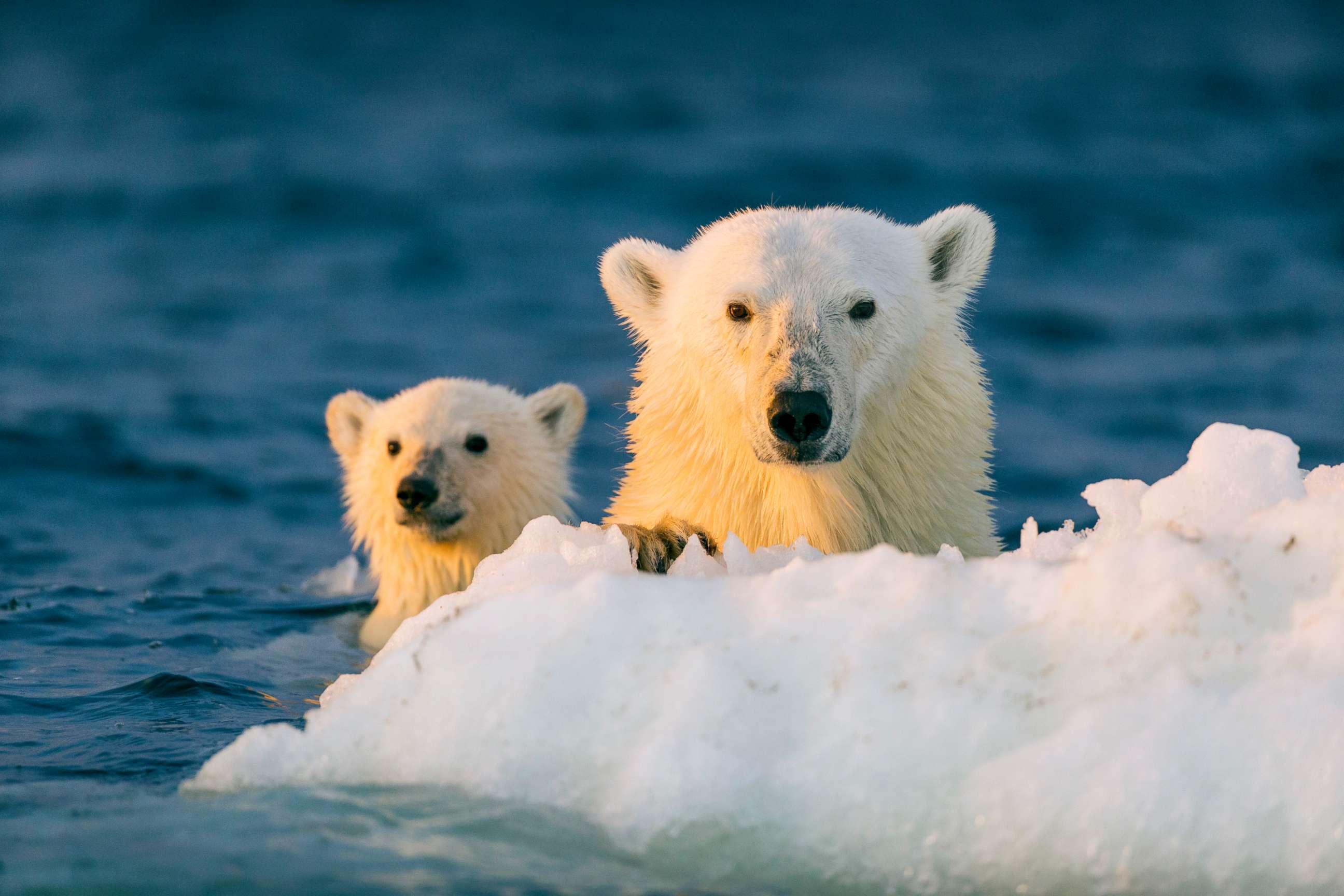Polar bears may be extinct by 2100 if Arctic ice melts at projected rate, according to new study
The study puts a timeline on the crisis for the first time as ice habitats melt.
A dire new climate change report projects polar bears could reach extinction within the next 80 years, putting a timeline on the crisis for the first time, as the beloved Arctic species continues to suffer along with melting ice habitats.
The University of Toronto-led study, published in Nature Climate Change on Monday, said the carnivores could be starved into extinction by 2100 as the Arctic sea ice continues to shrink at alarming rates, making it hard for the bears to hunt for food.
Dr. Peter Molnar of the University of Toronto in Ontario, Canada, reiterated the panic that scientists have long warned of, calling the polar bear the "poster child of climate change."
"Here, we establish the likely nature, timing and order of future demographic impacts by estimating the threshold numbers of days that polar bears can fast before cub recruitment and/or adult survival are impacted and decline rapidly," the study said.
It also suggests that with high greenhouse gas emissions, steeply declining reproduction and survival will jeopardize the persistence of all but a few high-Arctic subpopulations by 2100.

Scientists noted that "moderate emissions mitigation" could prolong their projected life-expectancy for a time, but it won't keep some populations from reaching extinction by the end of the century.
"Land-based feeding is unlikely to occur at scales that shift the timelines for recruitment and survival declines by more than a few years, because foods that meet the energy demands of polar bears are largely unavailable on land," the study said, noting that the impact was already being felt by some polar bear populations.
The Arctic is likely to have warmed by more than twice as much as the global average this year compared with pre-industrial temperatures, according to the World Meteorological Organization.
Wildlife experts have warned that shrinking sea-ice might cause the bears to move toward land as rising Arctic temperatures reduce their normal hunting grounds.
Last year, authorities in Novaya Zemlya, located in Russia's arctic region, had to declare a state of emergency as dozens of hungry polar bears overran villages and besieged residents. Unable to hunt on the ice as usual, the bears could be forced to venture inland to human settlements in search of food.
“Everyone understood that this could happen,” Mikhail Stishov, the World Wildlife Fund (WWF)’s project coordinator on Arctic biodiversity told Russian state news agency RIA Novosti in the wake of the 2019 emergency. “Now the bears are increasingly on the shores on account of the absence of ice for long periods. They come onto shore, where they get used to human housing, especially if the system of garbage disposal isn’t very well set up.”
Many countries have classified polar bears as an endangered species.
ABC News' Patrick Reevell contributed to this report.

